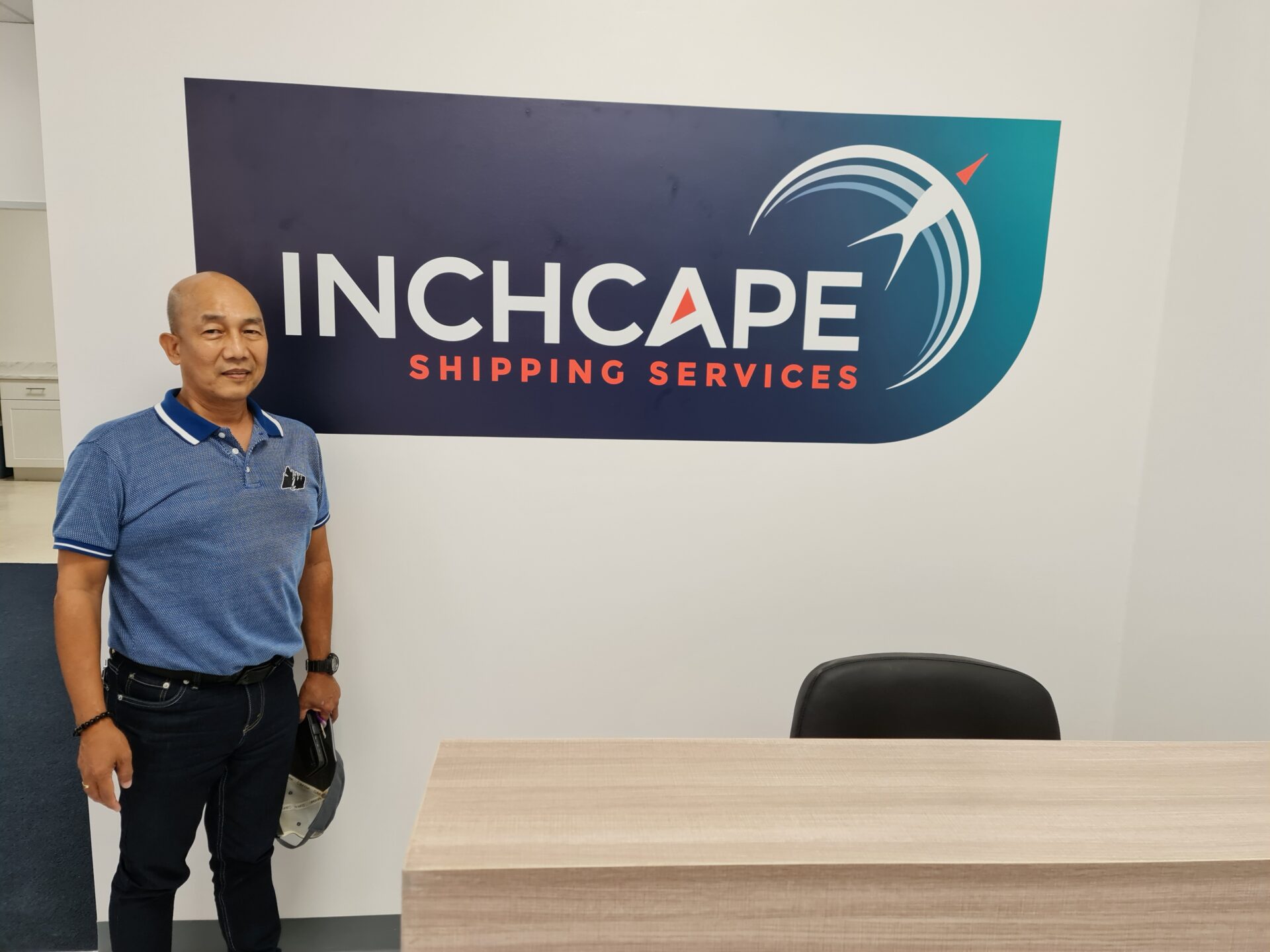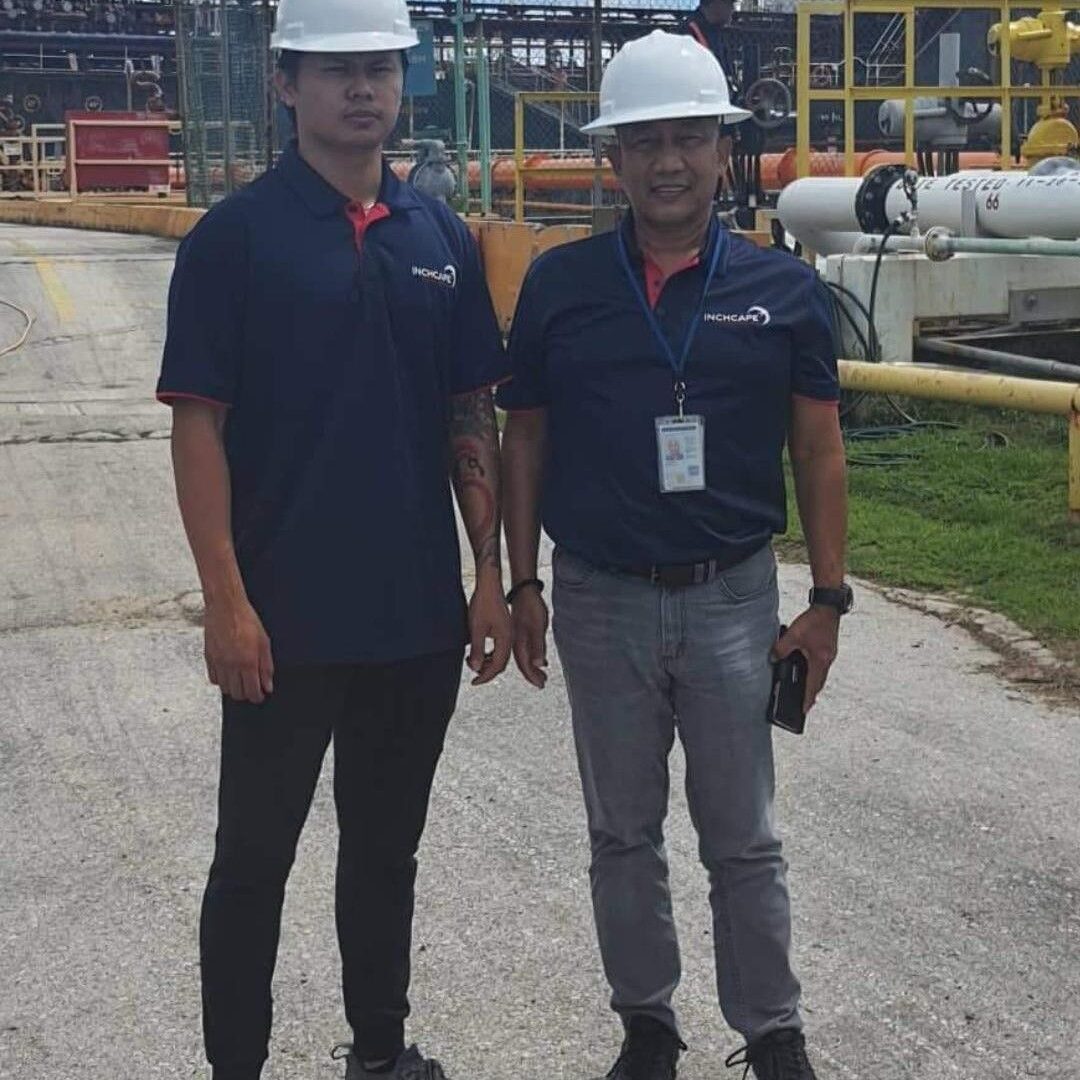Meet Ariel Dumapit, Operations Manager in Guam, where we recently reopened our office after a three-year hiatus handling business through a partner agent. The strategically located island is the largest in the Marianas and Inchcape had a permanent presence there since the 1990s. The new office regains direct control over all operational matters ensuring even better service for customers. Ariel’s a busy man but we managed to pin him down on Teams to grill him on the Guam file.
Great that you’re up and running again, Ariel, but why close the office in the first place?
Yes, it was sad but as my colleague Ajay Dattaram Bhosle, Area General Manager in Singapore, rightly explains, given the volume of business in Guam at that time it made better financial sense to use a partner agent instead. The good news is that volumes have bounced back after the pandemic justifying the move to reopen. Another key reason is that our customers universally want Inchcape to handle their ships, not a third party.

How does Guam fit in and how does Singapore support you as a control hub?
Our Asia-Pacific ROC (Regional Operations Centre) in Singapore has overarching responsibility for our operations here in Guam, Saipan and Tinian. They also oversee the Philippines, Myanmar and Federated States of Micronesia (FSM) comprising Kosrae, Yap, Pohnpei and Chuuk, where we continue to use a partner agent. However, in future as we grow the team in Guam, we will become the monitoring and communications control point for FSM as well. But if we can’t respond for whatever reason, or the customer is in a different time zone, Singapore can immediately step in and help them.
Many of our customers with shipping activities in Micronesia are also based in Singapore. Ajay tells me they say having the ROC there is a big advantage. It makes them feel more in control.
What are your core capabilities and main trades in Guam?
We provide all the usual port agency services and can do more complex stuff hooking into our global network. Our main business in the past few months is supporting product tankers, car carriers and military vessels. Guam has the biggest volume, but as we don’t have local staff in Saipan or Tinian it’s basically me following ships between the islands.
“Guam is strategically very important to the US. There are two military bases, a US Navy base and a USAF base, which means we’re handling more calls by logistics and naval ships. Another steady business is the ExxonMobil MR tanker Sophia, which calls regularly at Guam and I follow it up to Tinian and Saipan. We also handle a smaller tanker distributing fuel onwards to Palau.
As for crew changes, mostly we do them for the Sophia in port, but we also service ships in the OPL (outer port limits). We arrange hotels, transport and launch boats. We were very active in crew changes prior to the office closure, and that business increased exponentially when the pandemic started. A lot of ports in Asia prohibited crew changes, so most of them happened right here on a daily basis in the OPL. All the port agents in town were rushing around arranging testing, accommodation and transport. A lot of seafarers working worldwide are Filipinos, so United was flying almost non-stop to Manila, as even in the Philippines they weren’t doing crew changes during Covid.
One thing we don’t do here is containerships as the main carriers, APL and Matson, have their own offices. Remember the islands don’t produce anything so all consumer goods are imported. We do bunkering very rarely because fuel is too expensive here; Singapore is the big bunkering hub in our region.

Do you have any specific growth plans?
Yes, we have plans to expand all our services and organic growth through M&A. We also want to grow our footprint in project work. For example, we recently did a big job for the Singapore Air Force, delivering 13 boxes door-to-door to the USAF base over a period of one month.
“Most of our future business will most probably be related to military movements. That includes car carriers bringing new and used vehicles from Japan, for personnel use. On Tinian they’re also building a brand-new casino targeting Chinese tourists so even upmarket cars like BMWs are coming in.
We’re also targeting the cruise market as tourism pick back up. We’re already seeing visitors mainly from South Korea and Japan. They come for our great beaches! Just the other day I met up with the Guam Port Authority and representatives from MSC Japan and others for a tour of the port and a presentation of how we handle cruise ships.
What do you enjoy most about your job back in the Inchcape fold?
I’ve technically been doing everything myself up to now. It’s been pretty busy, sometime handling three ships at a time, but I get a real buzz from it. We also recently hired a new colleague, Kim Comia, who I’m training how to execute crew changes and customs clearance. We plan to get one more person on board in due course.
What’s been most gratifying throughout my career is getting commendations from ships’ officers on good service delivery. There was one occasion with a storm coming in and the supply officer on a particular ship was afraid the lines would snap. I alerted the tugs to get ready in case that happened, before they even asked, which they really appreciated. Also, when working with cruise ships I’ve been able to get passengers disembarked in a fast manner, faster than expected, for which the crews were grateful.
Being proactive and having a positive attitude are crucial. It’s best not to wait for customers to ask questions. Based on my experience I try to give suggestions before they’ve even got there. Local knowledge is also a factor.
Ariel Dumapit
What’s the most important value you provide as a port agent?
Being proactive and having a positive attitude are crucial. Again, it’s best not to wait for customers to ask questions. Based on my experience I try to give suggestions before they’ve even got there. Local knowledge is also a factor. Naval ships and cruise vessels are the most complex vessels to handle, with the most moving pieces, so knowing how to get things done efficiently and safely is invaluable. It’s reassuring for principals that their ships and crews are in good hands.
Tell us a bit about your background?
I first joined Inchcape in 1990. I was in Saipan then wondering what career to choose, and was asked if I had any interest in shipping. Of course, I said and they took me on! Five years later I was recruited by port agent Ambyth where I stayed for nine years. Then I had a break for a couple of years working as director of the American Red Cross in Saipan, which was rewarding. I’d been back at Ambyth for two years when Inchcape recruited me back as their local general manager dealing mostly with US military ships coming from the Philippines. When we closed the office, I returned to Ambyth during the pandemic. Now I’m happy to be back at Inchcape looking forward to new horizons!
What’s the most challenging feature of your work?
In short: bad weather! Being in the middle of the ocean we get regular nasty storms, which is a big concern for OPL crew changes. We always look at the weather first. If it’s too rough, the launch boat captain will cancel. Then we just have to wait for the weather. That can take time, but that’s what I’m there for.
Also, when following ships to the other islands I only take scheduled jet flights. We have some local guys flying six-seaters but I don’t like the idea of being in such a tiny plane in unpredictable conditions. It’s just plain scary!
Editor’s note: For all the above reasons Ajay can also confirm that customers are very happy to see Ariel back in action for Inchcape. Top job, Ariel!)